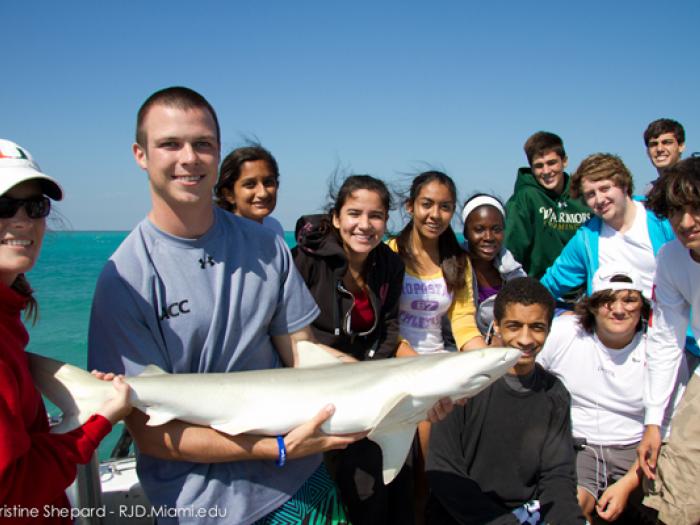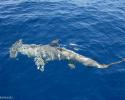Saving Sharks, One Fin at a Time
Saving Sharks, One Fin at a Time
Much like the lions of Africa's Serengeti, as apex predators living at the top of the food web, large sharks play a pivotal role in maintaining the health and balance of marine ecosystem. Changes in their abundance or behavior can have cascading effects on the whole community. This is a problem because rampant overfishing is causing drastic worldwide declines in shark populations. As a result, one in three species of pelagic sharks are now threatened with extinction.
Confounding the problem is that most sharks are killed solely for their fins to make shark fin soup, an Asian delicacy and status symbol. The fins have no color, taste or smell, but because it is a cultural sign of wealth, a single bowl of shark fin soup can cost well over $100! So, what can be done?
Research and Education
The RJ Dunlap Marine Conservation Program (RJD) at the University of Miami is working to protect global shark species through cutting edge scientific research and hands-on field and virtual learning experiences to graduate, undergraduate, high school students. Over the past six years, RJD has provided almost 4000 students with real in-field research experiences and reaches global populations through their online interactive website. The RJD Program's research and education work, led by UM Research Assistant Professor Dr. Neil Hammerschlag, is generating unique solutions to help conserve threatened shark populations.
The dangers in eating shark fins
A study recently completed by Hammerschlag and colleagues from the University of Miami revealed that shark fins contain high concentrations of a neurotoxin called BMAA, short for â-N-methylamino-L-alanine. BMAA has been linked to diseases such as Alzheimer's, Parkinson's and ALS. The study suggests that consumers of shark fins (and other parts) are at a risk of getting these neurological diseases. The study has generated tremendous scientific, media and public attention that will hopefully lower the demand for shark fins and help protect people from these neurodegenerative diseases.
The value of sharks
In 2009, Palau declared their waters a "shark sanctuary," making it illegal to harvest sharks. This is because, in addition to their ecological importance, it has been estimated that one individual living reef shark in Palau can be worth up to $1.9 million, compared to $108 if it were killed for its fins. Dr. Hammerschlag and his graduate student, Austin Gallagher, conducted a global analysis of all shark diving ecotourism and showed that the growing tourism industry generates more money to local economies than does killing the sharks for their fins to make soup.
Moving on the right direction, there has recently been a surge of laws to protect sharks. Here are a few the recent steps.
- September 2009 - Palau created the first national shark sanctuary.
- December 2010 - The United States passed the Shark Conservation Act which bans shark finning in US waters.
- June 2011 - Honduras created a shark sanctuary protecting sharks along both their Pacific and Caribbean coasts.
- July 2011 - The Bahamas banned all commercial shark fishing.
- 2011- 2012 A ban on selling shark fins has either passed or has legislation pending in California, Hawaii, Oregon, Washington, Florida, Illinois, Maryland, Virginia, and New York.









0 General Document comments
0 Sentence and Paragraph comments
0 Image and Video comments
New Conversation
New Conversation
New Conversation
New Conversation
General Document Comments 0

